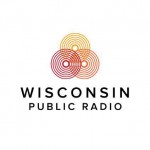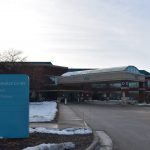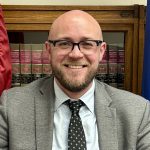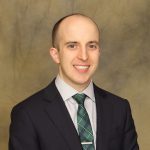Latest UW Branch Closure Follows Years of Declining Enrollment, Budget Cuts
UW system closing Baraboo Sauk County campus, sixth branch closure of 13 former two-year campuses.
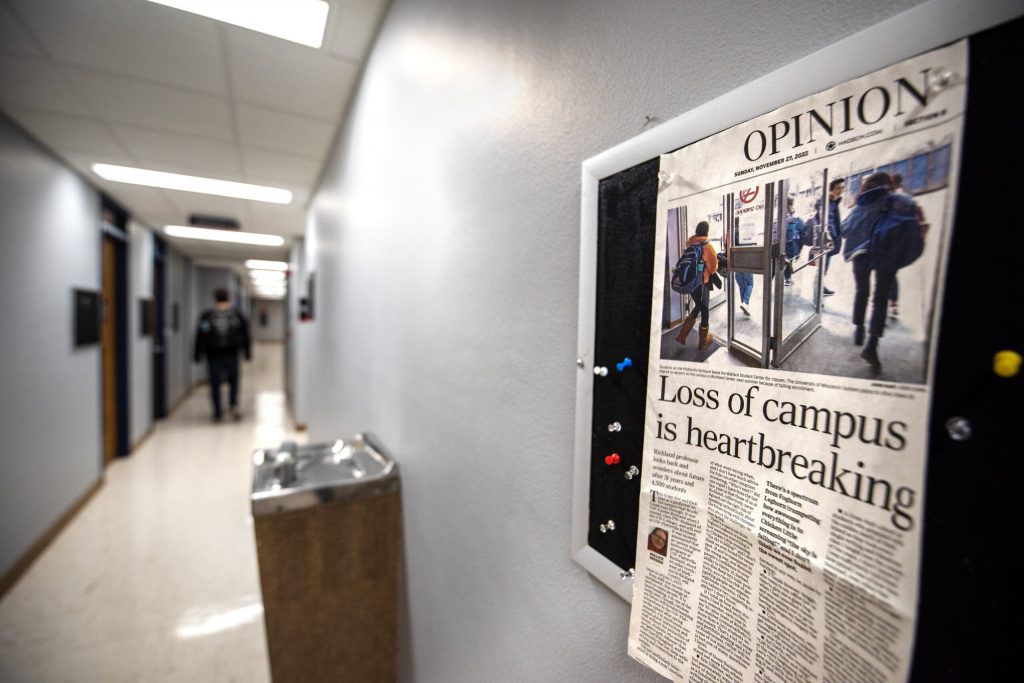
A newspaper page hangs on a billboard Wednesday, March 8, 2023, at University of Wisconsin-Platteville Richland in Richland Center, Wis. Angela Major/WPR
In the nearly three years since the University of Wisconsin-Platteville announced the end of classes at its Richland campus, a wave of closures of the university system’s branch campuses have followed. Today, only seven of the system’s 13 former two-year campuses are fully operational.
Last week, UW-Platteville announced the closure of its Baraboo Sauk County campus in May, citing declining enrollment.
It’s the most recent loss to the UW system’s footprint in smaller communities around the state. Alumni and education experts say the closures also make education less accessible for many in Wisconsin.
Ralph Pierce and his wife went to the Baraboo campus in the early 1970s when it was a feeder school for UW-Madison. He said his experience was “tremendous” in part because professors lived in the community.
“They got to know the students more because they were around the campus for a longer time, and the students were there,” Pierce said. “It was a very good social aspect to the campus — a family type of situation.”
At the time, Pierce said, branch schools did outreach at local high schools to convince students to enroll who may not otherwise have sought higher education. Pierce said this is what convinced his wife to go to the Baraboo campus.
“(The schools) would come out and go to Reedsburg and Baraboo and Portage, and they would promote the kids coming to the Baraboo campus,” he said. “That did a lot, because (my wife) was considering other places but got sold on Baraboo because of what they offered.”
For Pierce and others like him, branch campuses provided an affordable stepping stone to higher education within a close-knit community.
The closures, he said, “hurt people who are currently in college — but then think about the high school juniors and seniors, or adult who’s working and might be considering going back to school. It just completely eliminates an entire option for them.”
Odle also noted that there will be “hundreds of people who live in these communities who are now unemployed because this campus no longer exists.”
Most of the school closures have been due to financial or enrollment reasons.
The UW system has had budget challenges for many years. Funding for Wisconsin’s public higher education system ranked 44th in the country; neighboring states Illinois and Michigan are first and second, respectively.
Most of the UW system’s financial challenges come from what Odle called “a decade of really poor (budget) policy on behalf of the state.”
In 2013, the state Legislature froze tuition and cut funding for the UW system by $66 million, arguing that the system’s budget was bloated and inefficient. This move, Odle argued, effectively defunded the system’s two-year campuses.
Four years later, UW regents approved a sweeping plan to merge system campuses, citing declining enrollment. In a move designed to improve efficiency in administration, all 13 two-year campuses became regional branches of seven of the 13 four-year schools in the system.
Fewer resources at the schools contributed to even lower enrollment, Odle said.
“If we think that campuses have less resources, then that also means that they have less support for hiring really great faculty, for being nimble and creating new degree programs, for investing in student success and student support services and things like that as well,” Odle said. “And that, in turn, leads fewer students to make the choice to enroll in that campus.”
In the past, UW leaders have proposed merging the two-year institutions with nearby Wisconsin Technical College System schools but declined.
Editor’s note: WPR is a service of UW-Madison.
Latest UW branch closure comes after years of declining enrollment, budget cuts was originally published by Wisconsin Public Radio.
If you think stories like this are important, become a member of Urban Milwaukee and help support real, independent journalism. Plus you get some cool added benefits.

